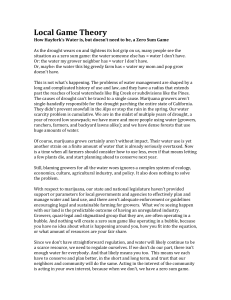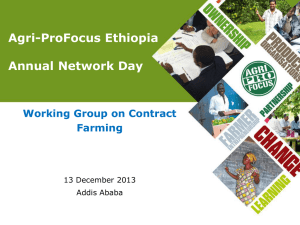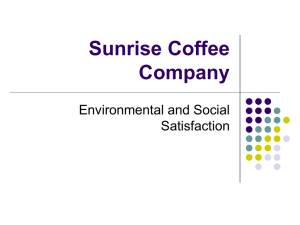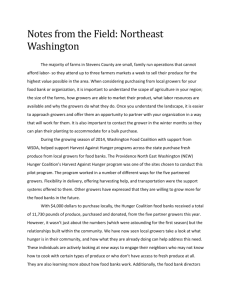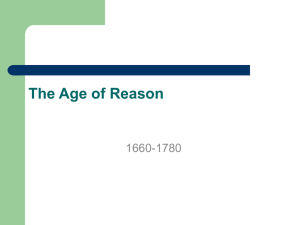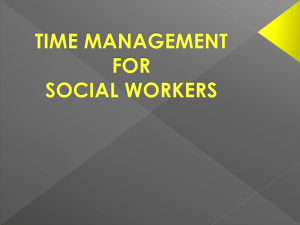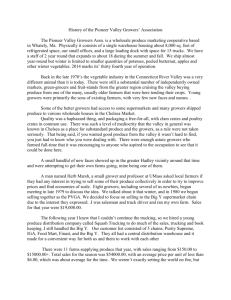Ryan
advertisement
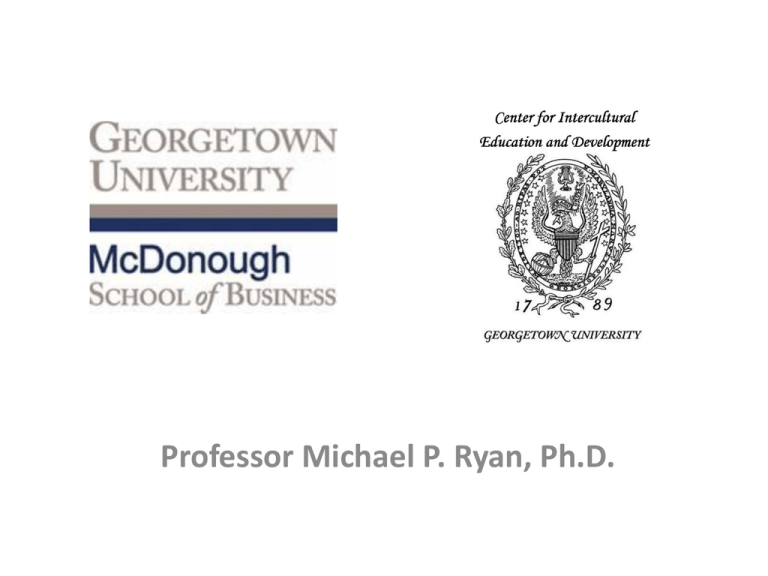
Professor Michael P. Ryan, Ph.D. Capabilities, Intellectual Property Institutions, and Development Country Capabilities “Driving explanation for sustained absolute country advantages is to be found in the persisting variation of organizational and institutional capabilities across time.” (Kogut, 1991:33-34) Capabilities are dynamic= “the capacity to renew competences” (Teece, Pisano, and Shuen, 1997:515) How Do Firms Compete/Innovate? Create and Integrate Knowledge (Kogut and Zander, 1992; Grant, 1996) How do Entrepreneurs Innovate? Prior Knowledge-Based Creation (Shane, 2000) Tangible and Intangible Resources Wernerfelt, Strategic Management Journal (1984) Grant, California Management Review (1991) Resource=any strength or weakness of firm; tangible and intangible assets tied semi-permanently to the firm (Wernerfelt) Major categories of resources (Grant, 119): Financial Physical Human Technological Reputation Organizational COMMON POOL RESOURCE COLLECTIVE GOVERNANCE AND ORGANIZATION OF COFFEE CAPABILITIES IN COLOMBIA Colombian Coffee Growers Federation Intangible Asset Juan Valdez Brand Strategy 1960 Trademark Law and Marketing Scholarship •Source Identity (Brown, 1948; Lemley, 1999; Litman, 1999) •Commercial Meaning (Schecter, 1927; Landes & Posner, 1987; Beebe, 2003-2004, 2005) Colombian Coffee Growers Federation Capabilities • International Marketing Offices Amsterdam, New York, Tokyo, and Beijing • 1,500 trained agronomists • 10-point quality management grading system • 15 provinces; 35 cooperative; 25 inspection centers; 516 purchase centers Colombian Coffee Growers Federation Governance • • • • • • • • • • • Colombian Coffee Growers Federation founded in 1927 328,000 growers federation ID card (500,000+growers) 4,368 growers elected to committees 364 municipality committees 15 regional committees National Coffee Congress National Coffee Board CEO 2,500 employees – 5-point HRM evaluation criteria National Coffee Fund US$1.5 billion to growers early 1990s CSR – 180 clinics; 200 health centers; 681,000 vaccinations; 6,000 schools; 5,000 teacher housing facilities; 10,000 miles of roads; 3,000 bridges Colombian Coffee Growers Federation DYNAMIC Capabilities • Chinese Market Opportunity? • Juan Valdez Cafes? • Freeze-Dried Coffee? Common Pool Resources for Development Craft Fashion Music Forestry, Biodiversity, Agriculture Tourism Where does breakthrough technology innovation occur? “Invention is the first occurrence of an idea for a new product or process, while innovation is the first attempt to carry it into practice.” (Fagerberg, 2005:4) What characteristics of capabilities and institutions explain why breakthrough technology innovation takes place in one country but not in another? Comparative Study of Breakthrough Bio-Medical Technology Innovation in Brazil and India Breakthrough Bio-Medical Technology Innovation (Wholly-New Product or Chemical Entity) Sao Paulo: Institute Butantan, University of Sao Paulo, FAPESP, FINEP Delhi and Bangalore: All India Institute of Medical Sciences, Department of Biotech , National Institute Immunology, National Institute of Translational Science, National Research Development Corporation, IISc—Bangalore, IIT-Delhi, University of Delhi, Biomed Tech Innovations in Sao Paulo • Ache Laboratories Farmaceuticos • Institute Butantan Center for Applied Toxinology/COINFAR Consortium • Pele Nova Biotecnologia • Genoa Biotecnologia • Recepta Biopharma Biomed Tech Innovations in New Delhi and Bangalore • Lifecare Innovations • Premas Biotech • bigtec Labs Breakthrough Biomed Technology Capabilities and Institutions in Brazil and India • Brazil = FINEP & FAPESP (NSF-like) + university and public research institutes, including technology incubators + active patent office + global networks • India = new Biotechnology Industry Research Assistance Council (Dept of Biotech/Ministry of S&T plus stakeholders) + new university and public research institute cluster parks + global networks Study of Breakthrough Green Tech Innovation in China Beijing and Shanghai Chinese Academy of Sciences, Fudan University, Institute for Environment & Development, Peking University, Tsinghua University Beijing and Shanghai Breakthrough Green Tech Innovator-Entrepreneurs • Beijing GW Process Technology Company (Professor Li and Dr. Li) • Tsinghua Solar Systems (Professor Yin Zhiqiang) • Shanghai Garbage Recycle Company (pseudonym) • Pearl Hydrogen Technology Company (Brian Tian) Breakthrough Green Tech Innovation Capabilities and Institutions in China Entrepreneurial public research institutes & universities + technology parks + senior government advocacy + active patent office + global networks + emerging angel/venture capital investment (?) How Do Entrepreneurial Universities Emerge? Public Good of Basic Science (Nelson, 1959) Entrepreneurial University and Public Research Institute (Etzkowitz, 1998) How Do Technology Networks Emerge? Network Governance Facilitates Diverse Knowledge Integration (Powell, 1990) Public-Private Bio-Medical Technology Networks Integrate Science and Commercial Knowledge (Powell, Doput, and Smith-Doerr, 1996) Do Patents Encourage R&D? Do Patents Encourage Technology Markets? Patents Solve Technology Appropriability Problem (North, 1981; Teece, 1987; Dam, 1994) Patents Facilitate Technology Markets (Arora, 1995) How Do Risk Capital Markets Emerge? •Entrepreneurial Public Research Institutes and Universities (Incubators) •Public S&T Funding Agencies •Angel and Venture Capital Investors Michael P. Ryan “Patent Incentives, Technology Markets, And Public-Private Bio-Medical Innovation Networks in Brazil” World Development 38(2010)1082-1093 Professor Michael P. Ryan, Ph.D.
